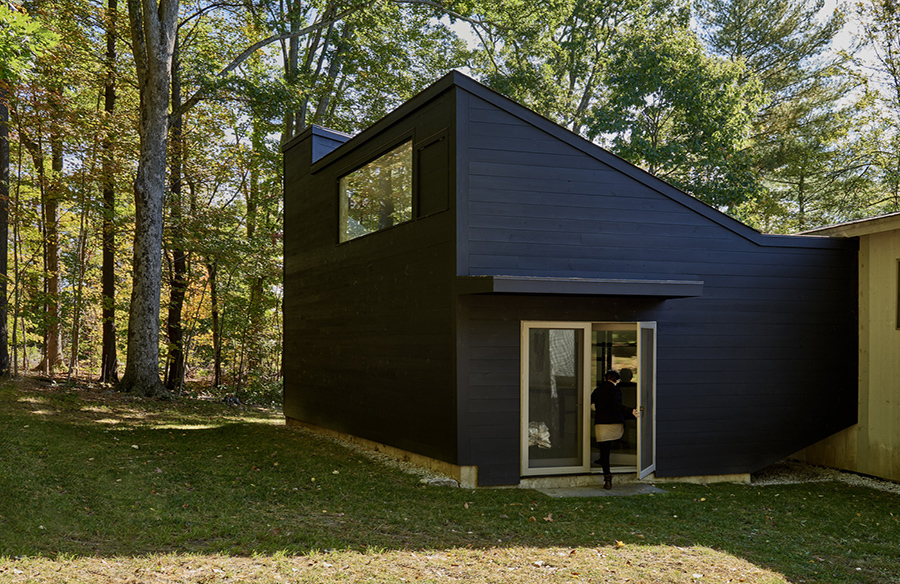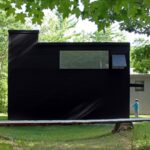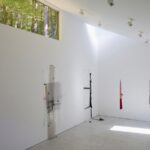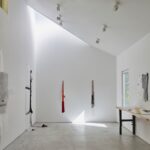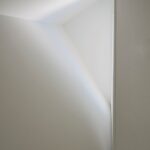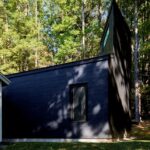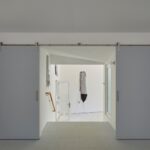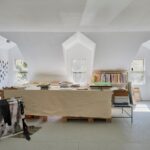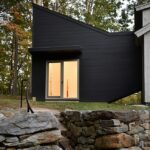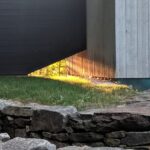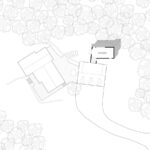Introduction
Nestled in the woods, the Double Square Studio by O’Neill McVoy Architects embodies the essence of simplicity and functionality. Designed for artist Gelah Penn, the studio serves as a sanctuary for creativity, focusing on the fundamental elements of light, proportion, spatial volume, and materiality.
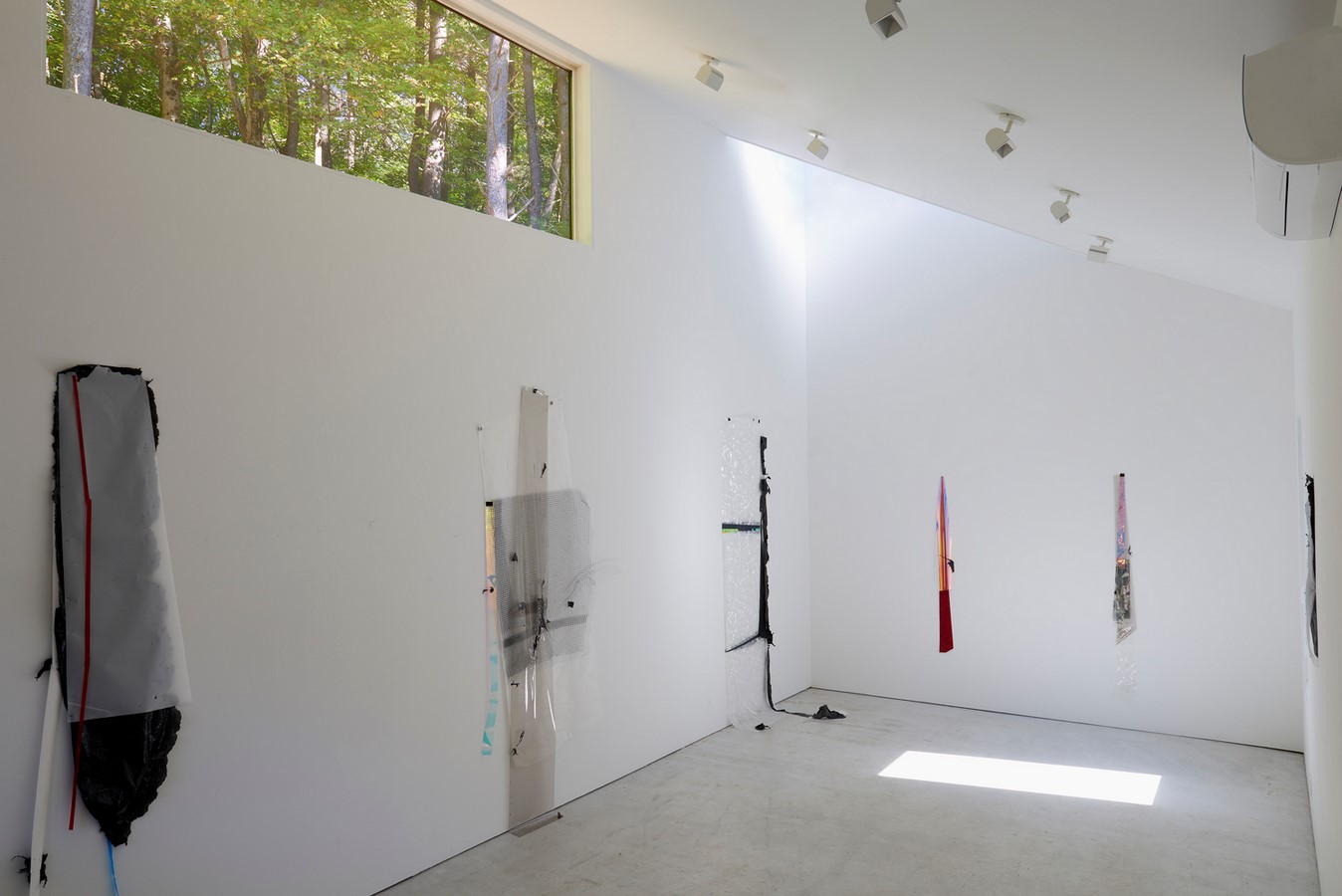
Design Concept
The studio’s orientation maximizes natural light, with its long, high side facing true north to capture the classic studio clerestory light. The strategic placement of windows and light monitors on the east, south, and west sides creates dynamic light patterns, enhancing the artist’s corner installation work.
Embracing Light and Height
Light and height are paramount in the construction of the studio, as Penn’s work revolves around visual ambiguity and the manipulation of translucent and optical materials. The studio’s north-light angled roof and vertical light chimney ensure ample natural light, fostering an environment conducive to artistic exploration.

Architectural Features
The studio’s architectural elements, including the stair-bridge and vertical light chimney, shape a volume with varied aspects on each side. This unique design not only provides functional connectivity but also contributes to the overall aesthetic appeal of the space. The ship-lap pine sheathing, stained in a ‘twilight zone’ hue, blends harmoniously with the wooded surroundings, creating a tranquil atmosphere.
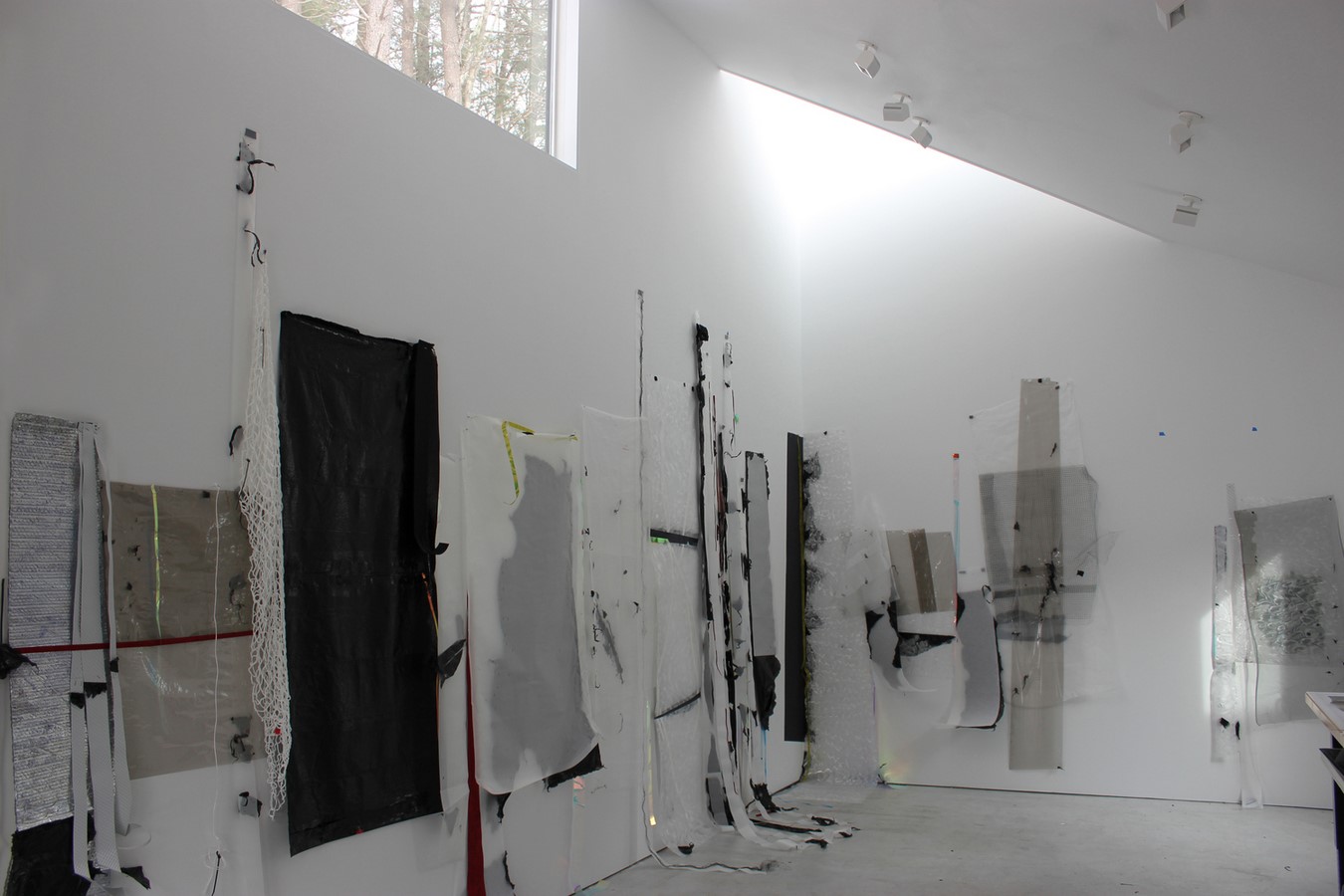
Collaborative Workspace
The studio’s design facilitates collaboration and creative exchange, connecting seamlessly with the adjacent garage second-floor studio shared with painter Stephen Maine. This integration forms an artist workshop compound, fostering a sense of community and shared inspiration.
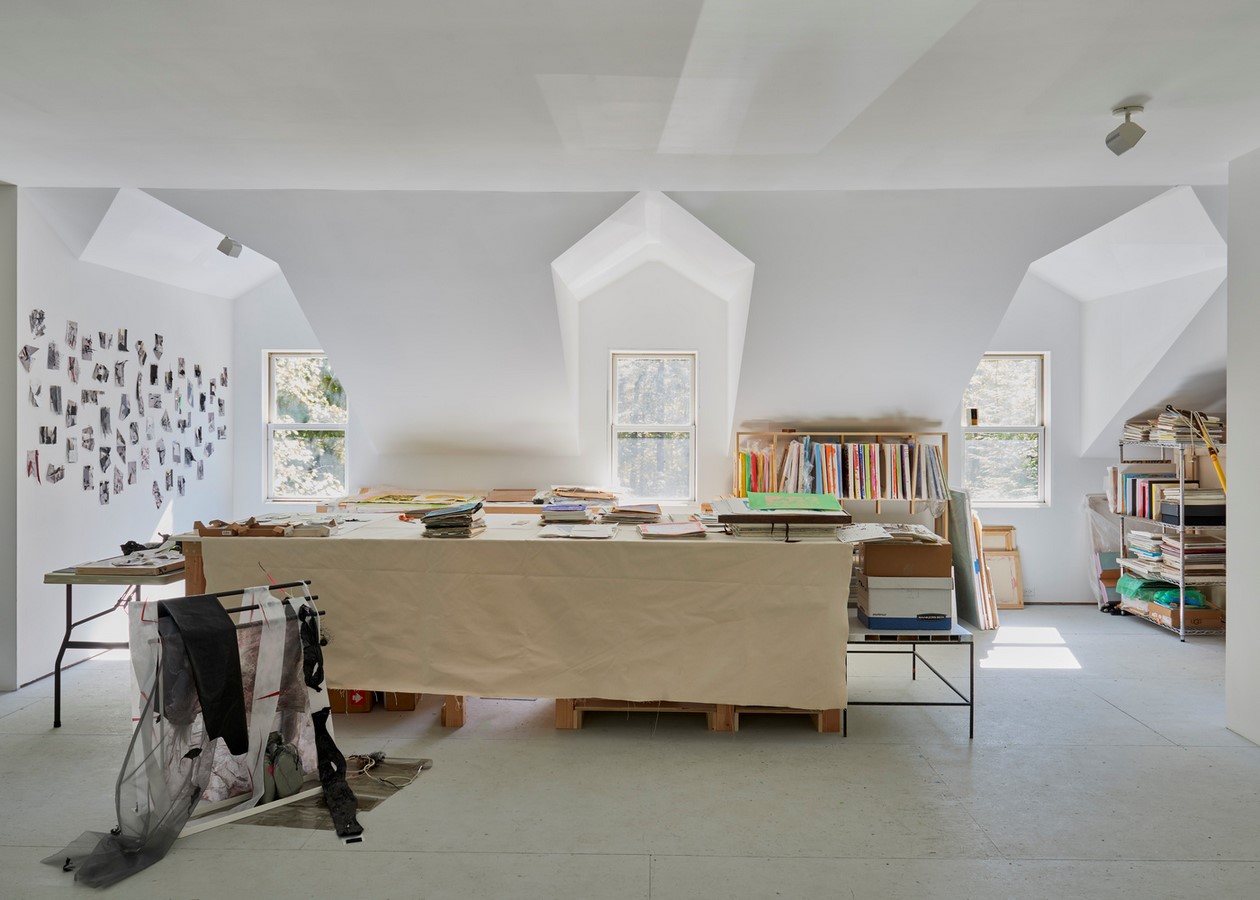
Conclusion
The Double Square Studio is more than just a physical space; it is a manifestation of artistic vision and creative expression. Through thoughtful design and attention to detail, O’Neill McVoy Architects have crafted a sanctuary where Gelah Penn can explore her artistic pursuits freely. With its harmonious blend of light, space, and materiality, the studio exemplifies the transformative power of architecture in nurturing creativity.
